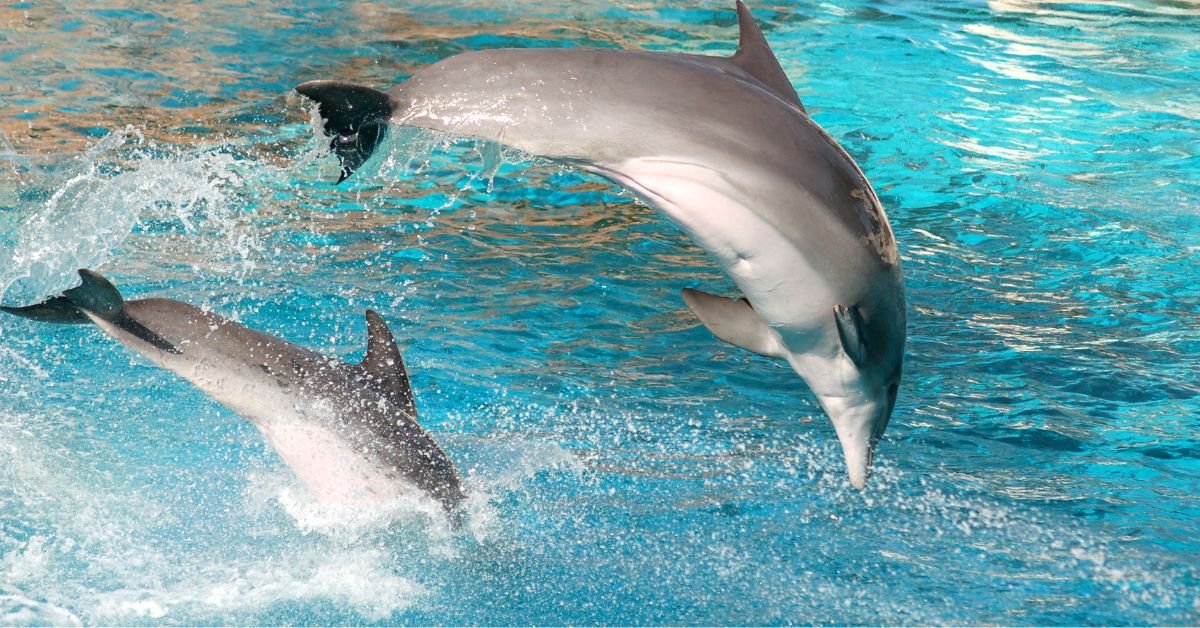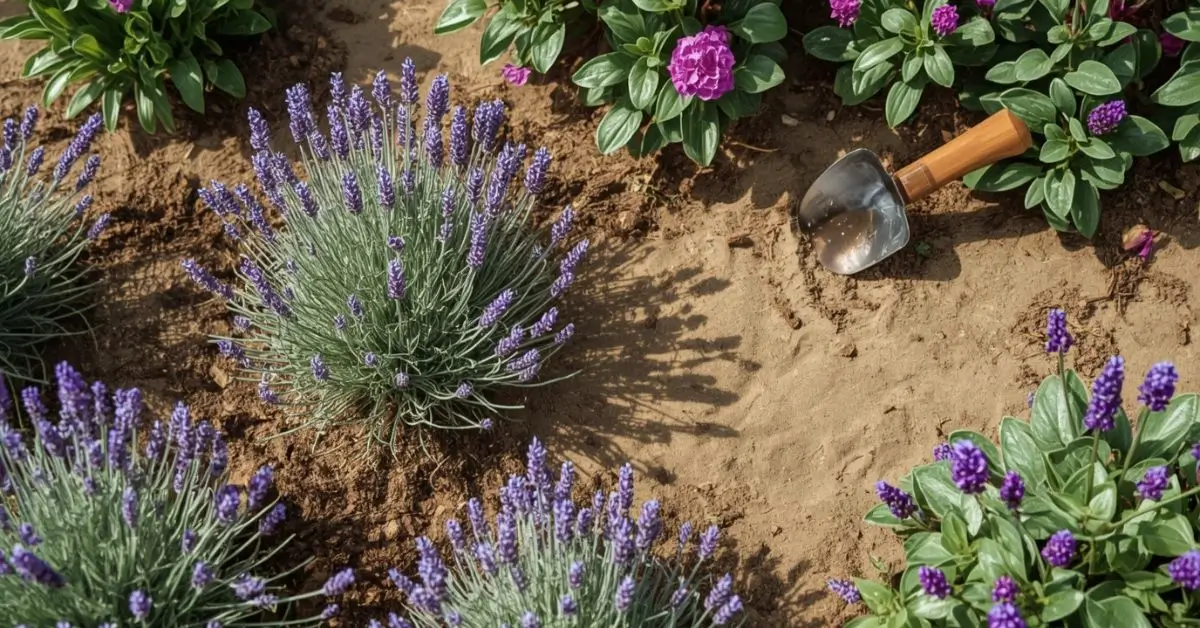BLOG
Pink Amazon River Dolphin: The Astonishing Wonder

pink Amazon river dolphin (Inia geoffrensis) is unlike any other dolphin on Earth. Found only in the freshwater rivers and lakes of the Amazon and Orinoco basins, this species stands out for its striking color, intelligence, and adaptability. But what makes it pink? And why is it so important to the Amazon ecosystem?
The Science Behind the Pink Color
Unlike their oceanic cousins, pink Amazon river dolphins can range in color from light gray to bright pink. The pink hue is more pronounced in males and is believed to be influenced by age, diet, and even water temperature. Some scientists think the color comes from scar tissue caused by rough play or fighting, while others believe it’s a natural adaptation to the murky river waters.
Geoffrensis: The Scientific Name
You might see the term geoffrensis when reading about these dolphins. That’s their scientific name: Inia geoffrensis. It honors the French naturalist Geoffroy Saint-Hilaire, who first described the species in the early 19th century. The name is now synonymous with the pink Amazon river dolphin, a symbol of the Amazon’s biodiversity.
Physical Features and Adaptations
The pink Amazon river dolphin is a master of adaptation. Unlike ocean dolphins, it has a flexible neck, allowing it to maneuver through flooded forests and tangled roots. Its long, slender beak is perfect for catching fish, crabs, and even small turtles.
Amazon River Dolphin Weight and Size
Curious about the amazon river dolphin weight? Adult males can weigh up to 185 kg (about 408 lbs), while females are generally smaller, averaging around 100 kg (220 lbs). They can grow up to 2.5 meters (8.2 feet) in length, making them the largest river dolphins in the world.
Unique Features
- Flexible neck: Unlike most dolphins, the vertebrae in their necks aren’t fused, giving them incredible agility.
- Large flippers: Their paddle-like flippers help them navigate tight spaces.
- Bulbous forehead: This houses the melon, an organ used for echolocation.
Life Cycle: From Baby Dolphins to the Oldest Ever Living Amazon River Dolphin
The life of a pink Amazon river dolphin is full of surprises, from playful baby dolphins to the wisdom of the oldest ever living Amazon river dolphin.
Baby Dolphins: The Start of an Amazing Journey
Baby dolphins, or calves, are born after a gestation period of about 11–15 months. They’re usually gray at birth and gradually turn pink as they age. Mothers are highly protective, and calves stay close for up to three years, learning how to hunt and navigate the complex river system.
A visitor to the Amazon once shared, “Watching a mother dolphin nudge her calf through the water was one of the most touching moments of my life. You could see the bond between them, even in the wild.”
The Oldest Ever Living Amazon River Dolphin
How long do these dolphins live? In the wild, the average lifespan is around 30 years, but some have been known to live even longer. The oldest ever living Amazon river dolphin on record reached an impressive 40 years, a testament to their resilience in a challenging environment.

Behavior and Social Life
Pink Amazon river dolphins are intelligent, curious, and sometimes a bit mischievous. They’re known for their playful antics, often seen tossing sticks, playing with fish, or even interacting with humans.
Social Structure
Unlike oceanic dolphins, pink river dolphins are more solitary or found in small groups. During the rainy season, when the forest floods, they spread out to hunt in the newly accessible areas.
Communication
These dolphins use a complex system of clicks, whistles, and body language to communicate. Their echolocation abilities are finely tuned for the murky waters of the Amazon.
Diet and Hunting Techniques
The pink Amazon river dolphin is an opportunistic feeder. Its diet includes over 50 species of fish, as well as crustaceans and small turtles. Their long beaks and flexible necks allow them to probe into crevices and under submerged logs.
During the flood season, they take advantage of the abundance of prey in the flooded forests, using their agility to outmaneuver fish hiding among the roots.
Myths, Legends, and Cultural Significance
The pink Amazon river dolphin isn’t just a biological marvel—it’s a cultural icon. In Amazonian folklore, the boto is believed to be a shape-shifter, capable of transforming into a handsome man to seduce women at night. Some locals believe that harming a dolphin brings bad luck, while others see them as protectors of the river.
These legends have helped protect the species, as many communities are reluctant to harm or hunt the dolphins.
Conservation Status: Risks and Challenges
Despite their legendary status, pink Amazon river dolphins face serious threats. Habitat loss, pollution, and accidental capture in fishing gear are major concerns. In some areas, they’re hunted for their meat or used as bait for catfish.
Conservation Efforts
Organizations across South America are working to protect the pink Amazon river dolphin. Efforts include creating protected areas, educating local communities, and promoting sustainable fishing practices.
Pros and Cons of Conservation
Pros:
- Preserves biodiversity
- Supports local ecotourism
- Protects other species in the ecosystem
Cons:
- Can conflict with traditional fishing practices
- Requires ongoing funding and support
Features and Usability in 2025
In 2025, technology is playing a bigger role in dolphin conservation. Satellite tracking, drone surveys, and AI-powered monitoring are helping scientists understand dolphin populations and threats in real time. Ecotourism is also on the rise, with more travelers seeking responsible ways to see pink Amazon river dolphins in their natural habitat.
Real-Life Encounters: A User’s Perspective
“I never believed the stories until I saw a pink dolphin leap out of the water right in front of me. It was like seeing a living legend. The guides explained how important these dolphins are to the river and the people who live there. It made me realize how much we need to protect them.”
Interesting Facts About Pink Amazon River Dolphins
- They blush: When excited or agitated, their skin can turn a brighter pink.
- Flexible diet: They eat more than 50 types of fish.
- Unique teeth: Their molar-like teeth help them crush crustaceans.
- Solitary nature: Unlike ocean dolphins, they’re often alone or in small groups.
- Cultural icon: Featured in Amazonian myths and legends.
FAQs
A. The scientific name is Inia geoffrensis. This species is also known as the boto or Amazon river dolphin.
A. The amazon river dolphin weight varies, but adult males can weigh up to 185 kg (408 lbs), while females are usually around 100 kg (220 lbs).
A. The oldest ever living Amazon river dolphin recorded lived up to 40 years, though most live around 30 years in the wild.
A. Baby dolphins stay with their mothers for up to three years, learning essential survival skills and forming strong social bonds.
Final Thoughts
The pink Amazon river dolphin is more than just a curiosity—it’s a symbol of the Amazon’s incredible diversity and resilience. From its unique color to its role in local culture, this dolphin reminds us of the wonders that still exist in our world. But with threats mounting, it’s up to all of us to ensure these magical creatures have a future.
BLOG
Vehicle Maintenance Matters: Tips from Trusted Auto Repair Experts

Routine maintenance isn’t just about oil changes. It includes checking your brakes, tires, fluids, and engine components. Regular inspections help catch small issues before they become major repairs. For example, a blinking engine light is a warning sign that should never be ignored. Addressing it promptly can prevent more serious engine damage and expensive repairs.
Common Auto Repair Tips
- Check Your Engine Light:
If your engine light starts blinking, it’s a sign that your vehicle needs immediate attention. Ignoring it can lead to severe engine problems. For more information on what a blinking engine light means and what steps to take, visit Central Avenue Automotive. - Monitor Fluid Levels:
Regularly check your oil, coolant, brake, and transmission fluids. Low or dirty fluids can cause significant damage to your vehicle’s systems. - Inspect Tires and Brakes:
Worn-out tires or brakes can compromise your safety. Make sure to inspect them regularly and replace them as needed. - Replace Air Filters:
A clean air filter improves engine performance and fuel efficiency. Check your air filter every 12,000 to 15,000 miles. - Schedule Regular Tune-Ups:
Routine tune-ups help keep your engine running efficiently and can catch potential issues early.
Choosing a Reliable Auto Repair Shop
Selecting a trustworthy auto repair shop is just as important as performing regular maintenance. A reputable shop will provide honest assessments, quality repairs, and fair pricing. Look for shops with certified technicians, positive customer reviews, and transparent communication.
One such trusted provider is Central Avenue Automotive, located in Kent, WA. They specialize in a wide range of vehicle services and are known for their expertise and customer-focused approach. By choosing a reliable shop like Central Avenue Automotive, you can ensure your vehicle receives the best care possible.
Save Time and Money with Preventive Care
Investing in regular maintenance and working with a reputable auto repair shop can save you from unexpected breakdowns and expensive repairs. Preventive care not only extends the life of your vehicle but also gives you peace of mind on the road.
BLOG
Point Nemo: The Astonishingly Isolated Corner of Earth

When most people dream of adventure, they imagine climbing tall mountains or trekking through vast deserts. But what if I told you the true frontier of remoteness isn’t a mountain peak or desert at all, but a lonely spot far out in the ocean? Meet Point Nemo, a location so isolated that the nearest humans are usually astronauts orbiting above the planet on the International Space Station. No roads, no islands, no nearby shores—just water, thousands of miles of it.What is Point Nemo?
Point Nemo isn’t a landmass. It’s a precise coordinate in the South Pacific Ocean, located at 48°52.6′S 123°23.6′W. Think of it as the ocean’s “middle of nowhere.” To get there, you’d need to travel about 2,700 kilometers (1,450 nautical miles) in any direction to reach the nearest land.

That’s farther than most people ever sail in a lifetime. For context, it’s like being in the middle of New York, Los Angeles, and Chicago combined—with no highways, no airplanes, no way for anyone to stop by for a cup of coffee.
Its name comes from Latin—“Nemo” means “nobody.” And as anyone who has gazed at a map of the South Pacific will tell you, this spot certainly lives up to its name.
Why Point Nemo Is Called the Most Remote Place in the World
When scientists calculated Point Nemo in 1992, they used computer software to locate the spot in the world’s oceans that was farthest from land. It dethroned mountain deserts and icy tundras, becoming the official winner of isolation.
So why does it hold the crown for the most remote place in the world?
- Distance from Human Civilization: The closest pieces of land are uninhabited islands like Ducie Island (Pitcairn Islands), Motu Nui (near Easter Island), and Maher Island (near Antarctica). None have residents.
- High Ocean Desolation: Even ships rarely traverse these waters. International shipping lanes are hundreds of miles away.
- Proximity to Space Travelers: Astronauts orbit Earth at about 420 kilometers above on the ISS—closer to Point Nemo than any land-dweller.
One oceanographer joked: “If you felt lonely there, you’d be closer to tweeting an astronaut than asking a neighbor for sugar.”
Point Nemo Flag: Symbol of Isolation
Over time, Point Nemo has sparked cultural movements. Some explorers, cartographers, and internet users even promoted a Point Nemo flag—a fictional banner to represent the most desolate place on Earth.

It usually incorporates symbols of the ocean, compass designs, or abstract nautical art. Though not officially recognized by any government, the flag symbolizes humanity’s fascination with extreme frontiers. For many, it’s a playful nod to exploration in an otherwise unreachable part of the map.
The Most Desolate Place on Earth
If we measure desolation as lack of life, contact, or activity, Point Nemo might be the most desolate place on Earth.
- No Tourism: Unlike Antarctica or the Sahara, there are no tour packages to Point Nemo. Reaching it requires a private expedition, satellite navigation, and serious resources.
- Sparse Marine Life: The waters are part of the South Pacific Gyre, an area with low nutrient flow. It’s one of the ocean’s great “biological deserts.”
- No Natural Landmarks: Unlike other remote areas, there’s no island, no rock formation—just endless sea on every horizon.
It’s almost poetic: a place equally unreachable to travelers and animals alike.
Point Nemo and the Spaceship Cemetery
Here’s where things get mind-bending. NASA and other space agencies use Point Nemo as a spacecraft graveyard.
When satellites, rocket modules, and even space stations reach the end of their lifespan, they’re deorbited into Earth’s atmosphere. The safest way to drop them? Over a remote patch of ocean where they won’t hit anyone—right above Point Nemo.
As of 2025, more than 260 spacecraft have been intentionally crashed there, including Russia’s Mir space station in 2001. That’s why some people call it the “underwater Point Nemo”—a reminder that beneath its waves lies humanity’s space junkyard.
It’s eerie to imagine real-life “ghosts of technology” resting on the seabed of the most isolated place in the world.
Point Nemo vs. Other Remote Places
We love ranking extremes. So how does Point Nemo compare to the world’s other most remote places on Earth?
Tristan da Cunha (South Atlantic)
- Remote inhabited island.
- Population: ~250.
- Known as the remotest lived-in place.
Oymyakon, Siberia
- Coldest permanently inhabited settlement.
- Winters reach -67°C, but at least humans live there.
Antarctic Plateau
- Huge frozen desert.
- No permanent population, only research scientists.
Point Nemo (South Pacific)
- No land, no population, no infrastructure.
- By definition, the furthest spot from civilization.
Result? Point Nemo wins when “isolation” is defined by distance from humanity.
Underwater Point Nemo: What Lies Beneath?
The ocean floor under Point Nemo is about 13,000 feet deep. It’s part of the Pacific abyssal plain. Unlike coral reefs or volcanic ridges, there aren’t dramatic underwater structures here.
Scientists know little about life in this area because expeditions are rare. Still, microbes capable of surviving on minimal energy sources likely thrive there. Some even speculate undiscovered species waiting in the shadows.
In 1997, mysterious underwater sounds nicknamed “The Bloop” were traced back near Point Nemo. Some thought it was a sea monster. Later, NOAA scientists confirmed it was most likely the sound of icebergs cracking. Still, the association with Point Nemo adds to its legend.
Psychological Fascination with Isolation
Humans have always been curious about isolation. We flock to the most isolated places in the world because they push our imagination. Point Nemo isn’t just geographical trivia; it symbolizes ultimate solitude.
In a world overwhelmed by digital notifications and constant crowds, the idea that such untouched places exist is oddly comforting. It reassures us that even in 2025, Earth still keeps secrets.
A user once tweeted: “Point Nemo comforts me. Somewhere out there is a place so alone that even satellites need directions to find it. Reminds me not everything has to be connected.”
Challenging the Journey
Could you visit Point Nemo? Technically, yes—but few have. Here’s why:
- Logistics: A round trip might cost tens of thousands of dollars for fuel, crew, and supplies.
- Safety: Storms, navigation errors, and lack of rescue services make it dangerous.
- Purpose: There’s nothing visible to “see” upon arrival. It’s all psychological.
Unlike climbing Everest or trekking the Amazon, arriving at Point Nemo doesn’t give you breathtaking views—it gives you awareness of distance itself.
The Allure of Human Curiosity
Point Nemo represents more than ocean emptiness. It symbolizes our need to map the unseeable. Scientists, adventurers, and even artists look at it differently:
- For scientists: It’s a waypoint in oceanography and aerospace safety.
- For philosophers: A metaphor for ultimate loneliness.
- For writers: Inspiration for stories about mystery and the unknown.
And while thousands may never go there, millions dream about the concept of it.
FAQs About Point Nemo
1. Why is Point Nemo so special?
Point Nemo is the most remote place on Earth, located more than 2,700 km from the nearest land. It’s unreachable, desolate, and symbolic of pure isolation.
2. Can people travel to Point Nemo?
Yes, but it’s extremely difficult. You’d need a private vessel, expert navigation, and serious funding. There are no tours or casual visits.
3. What is underwater at Point Nemo?
The seafloor is about 13,000 feet below, with scattered spacecraft debris. NASA and other agencies use it as a controlled crash site for deorbited satellites.
4. Is Point Nemo the most isolated place in the world?
By definition, yes. While remote islands and icy outposts are far away, Point Nemo is literally the furthest you can get from any land.
Final Thoughts
Point Nemo is Earth’s ultimate reminder that not every corner is within human reach. In an age of instant communication, maps, and satellites, this place whispers: Here lies true distance.
Whether you see it as the most desolate place on Earth, a spacecraft graveyard, or simply romantic emptiness, Point Nemo matters because it exists. Like the moon or Mars, it calls to our imagination—highlighting how mystery still lingers in our oceans.
BLOG
How to Choose Lavender Best Soil for Gardens & Pots

Growing lavender successfully starts with choosing the right soil. Whether you’re a home gardener, herbalist, landscape designer, or indoor plant enthusiast, the soil you select directly impacts plant health, fragrance, and flowering. In this guide, we’ll cover everything you need to know about lavender best soil, including preparation tips, nutrient requirements, and growing strategies.
Why Soil Matters for Lavender Growth
Lavender is a Mediterranean herb that thrives in well-draining, nutrient-rich soil. The right soil ensures:
- Healthy root development
- Vibrant blooms and strong fragrance
- Resistance to root rot and disease
- Optimal growth in containers or gardens
Expert Citation: According to the Royal Horticultural Society, “Lavender plants require well-drained soil with a slightly alkaline pH to flourish.”
Key Soil Requirements for Lavender
Well-Draining Soil
- Prevents waterlogging, which can cause root rot.
- Ideal types: sandy, loamy, or rocky soil.
- Avoid clay-heavy soil unless amended.
Optimal pH Levels
- Lavender prefers a slightly alkaline to neutral pH (6.5–7.5).
- Test soil pH before planting; use lime to raise acidity if needed.
Soil Texture and Composition
| Soil Type | Benefits for Lavender | Notes |
|---|---|---|
| Sandy Soil | Excellent drainage, easy root growth | May require organic amendments for nutrients |
| Loamy Soil | Balanced drainage and fertility | Best for garden beds |
| Clay Soil | Retains moisture | Must be amended with sand or gravel for proper drainage |
Preparing Soil for Lavender Plants
Step-by-Step Soil Preparation:
- Clear the area: Remove weeds, debris, and rocks.
- Test pH: Use a soil test kit; adjust as needed with lime or sulfur.
- Improve drainage: Add sand, gravel, or organic compost for clay or dense soil.
- Add nutrients: Incorporate well-rotted compost or organic fertilizer.
- Form raised beds (optional): Helps excess water drain quickly.
LSI Integration: These steps ensure well-draining soil for lavender, perfect for both potted plants and garden beds.
Best Soil Mix for Potted Lavender
For indoor gardeners or container planting:
- 1 part potting soil
- 1 part coarse sand or perlite
- 1 part compost or aged manure
This mixture provides fertile soil for aromatic herbs, excellent aeration, and sufficient nutrients for growth.
Expert Citation: University of California Agriculture & Natural Resources recommends using a sandy-loam potting mix for container-grown lavender.
Organic Soil Amendments for Lavender
- Compost: Enhances nutrient content.
- Perlite or pumice: Improves aeration and drainage.
- Dolomitic lime: Balances pH for slightly alkaline conditions.
- Gravel or sand: Prevents water retention in heavy soils.
These amendments create ideal Mediterranean soil types, replicating lavender’s native environment.
Common Soil Mistakes to Avoid
- Using water-retentive clay soil without amendments
- Planting in acidic soil (pH <6.0)
- Over-fertilizing, which can reduce blooms
- Ignoring drainage in containers or raised beds
Tip: Always check soil moisture before watering to prevent root rot.
FAQ’s
What is the best soil for growing lavender?
Well-draining sandy or loamy soil with a slightly alkaline pH (6.5–7.5) is ideal for healthy lavender plants.
How to prepare soil for lavender plants?
Clear weeds, test pH, amend with sand or compost, and consider raised beds for optimal drainage.
Lavender soil pH and nutrient requirements
Lavender thrives in slightly alkaline to neutral soil; moderate organic amendments are sufficient for nutrients.
Which soil type does lavender grow best in?
Sandy or loamy soils are preferred; clay soils must be amended to ensure proper drainage.
Tips for improving soil drainage for lavender
Add sand, gravel, or perlite, plant in raised beds, and avoid waterlogging.
Best soil mix for lavender in pots or containers
Mix equal parts potting soil, sand/perlite, and compost for fertility and aeration.
Conclusion
In conclusion, choosing the lavender best soil is essential for vibrant blooms, healthy roots, and thriving plants. By using well-draining, nutrient-rich soil and following proper preparation tips, gardeners and plant enthusiasts can ensure their lavender flourishes in both gardens and containers.
-

 BLOG6 months ago
BLOG6 months agoBerniece Julien: The Quiet Power Behind the Spotlight
-

 BLOG6 months ago
BLOG6 months agoCineby App (2025): Features, Download & Fixes Guide
-

 ENTERTAINMENT6 months ago
ENTERTAINMENT6 months agoErome Uncovered: A Closer Look at the NSFW Content Platform
-

 EDUCATION6 months ago
EDUCATION6 months ago42°C to °F – Real Impact of Extreme Heat
-

 ENTERTAINMENT6 months ago
ENTERTAINMENT6 months agoScoutedToday: Discovering Tomorrow’s Talent Today
-

 TECH6 months ago
TECH6 months agoHow to Fix ‘Fatal glibc error: CPU Does Not Support x86‑64‑v2’ on Legacy Hardware
-

 TECH6 months ago
TECH6 months agoCaricatronchi: Redefining Digital Caricature
-

 ENTERTAINMENT6 months ago
ENTERTAINMENT6 months agoMangaFire Explored: Your Gateway to Free Manga Reading
